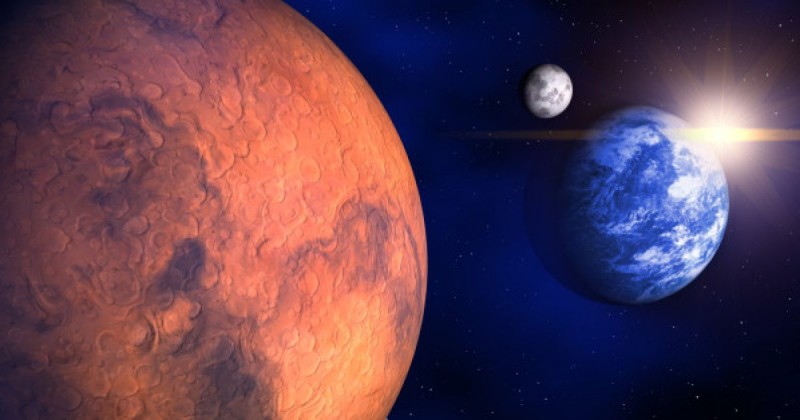
New Delhi:- A day on Mars is a little bit longer than a day on Earth. However, scientists are trying to adjust the difference. Information from NASA's InSight lander has shown that days on Mars are becoming a tiny bit shorter, but scientists do not know the reason behind this change.
InSight was a robot that did experiments on Mars from 2018 until its solar panels got too dirty and it ran out of power in December 2022. The main aim was to study inside the Red Planet, and it also carried radio antennas that could measure how Mars spins.
These antennas would talk to NASA's system on Earth called the Deep Space Network. They could measure the stretching and shortening of radio waves as the planet moved the lander closer and then farther away from Earth. This is called the Doppler effect. It's when an ambulance siren sounds higher when it comes closer to you, and lower when it moves away from you.
Also Read:- NASA Enhances Public Engagement with New Website, Streaming Service, and App Update
The group looked at information collected during the first 900 days on Mars by InSight. They also made adjustments to account for things like the sun's wind and moisture in Earth's air. Scientists could look for differences that were solely caused by changes in the speed of Mars' rotation.
"We want to find small changes that are only a few tens of centimeters over a year on Mars," explained Sebastien Le Maistre, the main writer of the research. "It takes a really long time and a large amount of information to gather before we can even notice these differences. "
The researchers found out that Mars is rotating faster by a very small amount every year. This makes the length of a Martian day slightly shorter each year.
Also Read:- NASA to lose proximity with its Voyager 2 and hoping soon to reunify
We don't know why the planet is getting faster at this time. The Moon affects how fast the Earth spins and is making our days a tiny bit longer. However, the two moons of Mars are smaller and do not appear to be responsible. Instead, experts believe that the swell could come from the movement of ice accumulating on the polar caps, or from land areas rebounding after being covered by glaciers.
The information can also assist scientists in measuring Mars' wobbling movement as it rotates. This wobbling is caused by the movement of liquid inside its core. They were able to guess what the inside of the Earth's core looks like and how big it is, between 1,112 and 1,150 miles (1,790 and 1,850 km).
Also Read:- NASA to secure Connection with its Voyager 2 after false lead hiked up
Even though InSight is not getting new information anymore, scientists will keep examining the wealth of data it has already gathered for many years.
The study was shared in the journal Nature. In the video below, they explain how they measure the rotational speed that is constantly changing.
Also Read:- The two NASA brothers Voyager 1 and 2 are now at the end of their lives
NASA conducted a research study on Mars using a probe called InSight. The scientists at NASA discovered during their study that the speed of Mars is getting faster each year due to the wind and the atmosphere on the planet. The probe also left in 2022 because the antennas were not working properly due to the dusty environment.